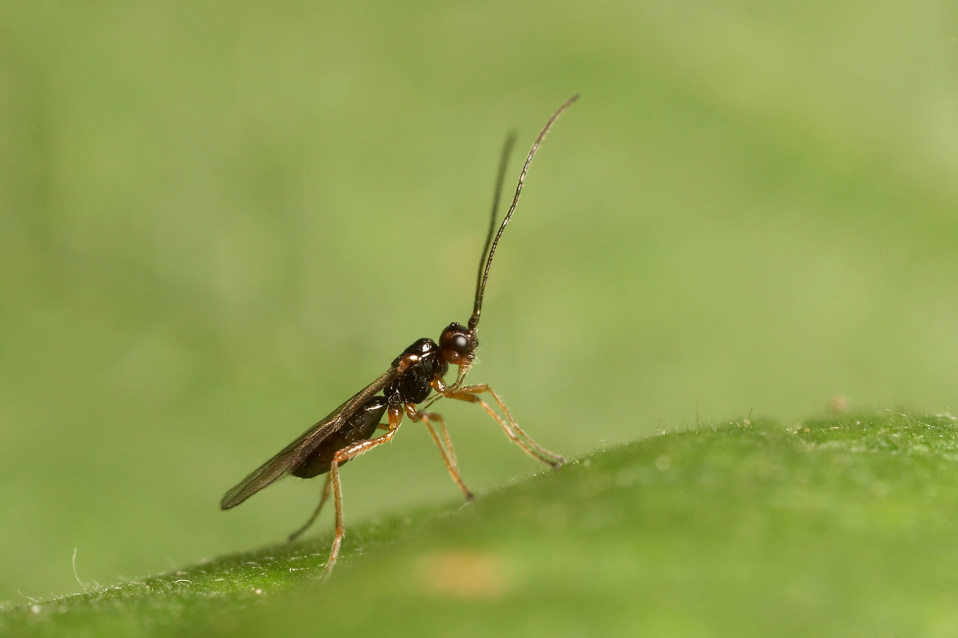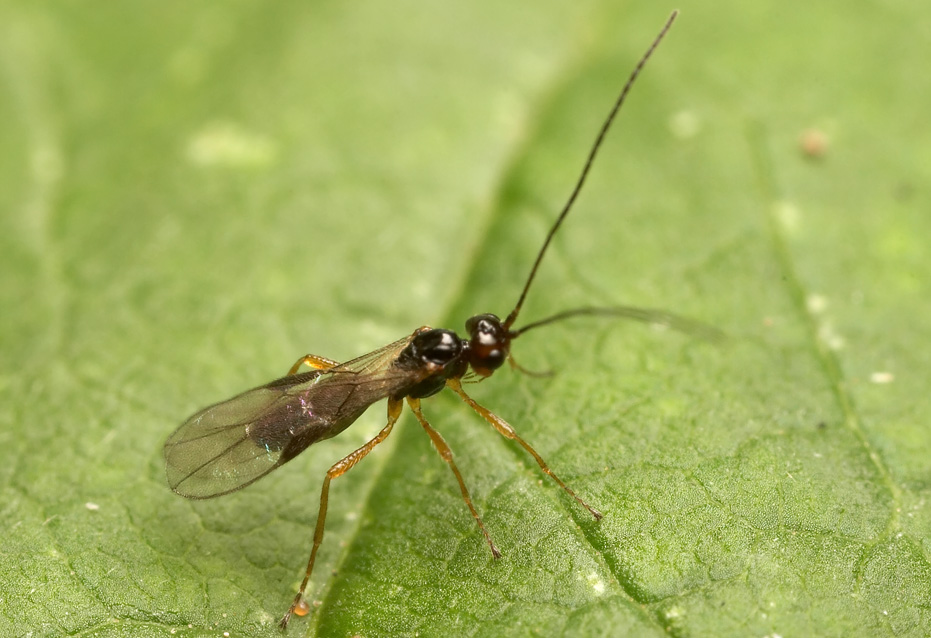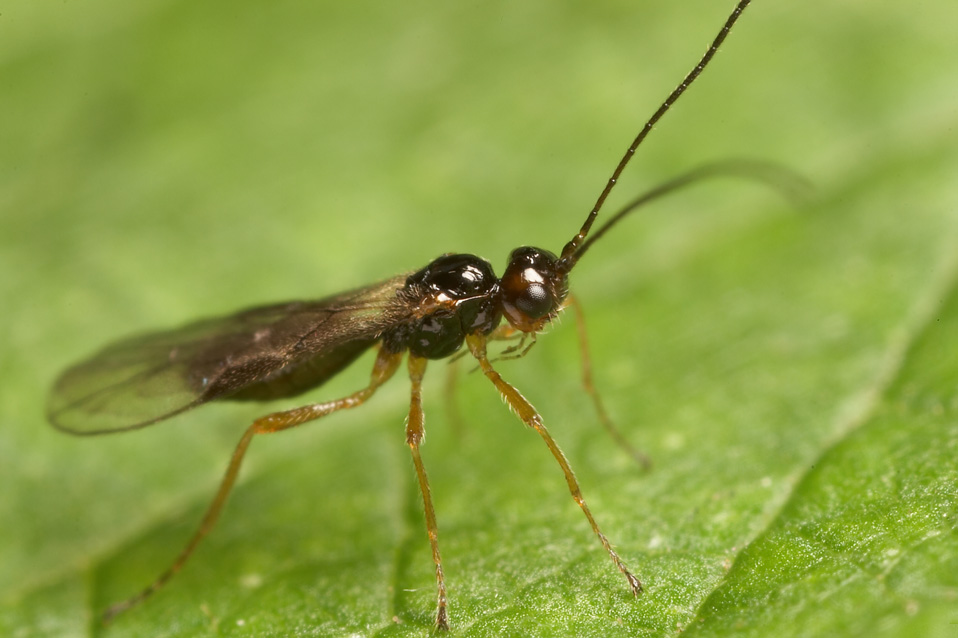Diptera.info :: Identification queries :: Other insects, spiders, etc.
|
Another Ichneumon ?
|
|
| LordV |
Posted on 24-08-2006 09:19
|
|
Member Location: Posts: 673 Joined: 06.09.05 |
Taken 23/08/06 on a raspberry leaf in a shady area of my garden South Coast UK, About 7mm long. Very long mouth feelers. Any ideas ? Thanks Brian V.    |
|
|
|
| Paul Beuk |
Posted on 24-08-2006 09:48
|
|
Super Administrator Location: Netherlands Posts: 19403 Joined: 11.05.04 |
I'd say Braconidae.
Paul - - - - Paul Beuk on https://diptera.info |
| Jan Willem |
Posted on 24-08-2006 09:49
|
|
Member Location: Waalwijk, The Netherlands Posts: 2161 Joined: 24.07.04 |
It looks like Braconidae to me. I can't see the mandibles very good, but it could be a member of the subfamily Alysiinae. Jan Willem |
|
|
|
| LordV |
Posted on 24-08-2006 10:02
|
|
Member Location: Posts: 673 Joined: 06.09.05 |
Thanks for the help. Just to show my complete ignorance of naming and bug families, this means the following ID is correct so far ? Hymenoptera: Ichneumonoidea: Braconidae: Alysiinae So is it an Ichneumon wasp ? or does it have to be in the Ichneumonidae to have that generic title- ie this would normally be referred to as Braconid wasp rather than an Ichneumon wasp ? Thanks Brian V. Edited by LordV on 24-08-2006 10:17 |
|
|
|
| diphascon |
Posted on 24-08-2006 19:54
|
|
Member Location: Posts: 85 Joined: 26.07.05 |
LordV wrote: this would normally be referred to as Braconid wasp rather than an Ichneumon wasp ? Thanks Brian V. So it is. cheers - martin |
|
|
|
| Jan Willem |
Posted on 25-08-2006 12:18
|
|
Member Location: Waalwijk, The Netherlands Posts: 2161 Joined: 24.07.04 |
I asked Kees van Achterberg if he agreed with me about the specimen being a member of the subfamily Alysiinae. Well he did agree with me and wrote the following: It's a species of the genus Asobara s.l. (so including Aphaereta). It's a male. Difficult to identify! So: Hymenoptera: Ichneumonoidea: Braconidae: Alysiinae: Asobara (s.l.) spec. Aphaereta used to be treated as a separate genus but is currently regarded as a subgenus of the genus Asobara. For as far as I know Asobara species are known as important parasitoids of Drosophilidae (I didn't get this information from Kees). Jan Willem |
|
|
|
| LordV |
Posted on 25-08-2006 21:08
|
|
Member Location: Posts: 673 Joined: 06.09.05 |
Thanks Jan and Martin for the further help  Brian V. |
|
|
|
| Jump to Forum: |













